Sacroiliac Joint Treatment
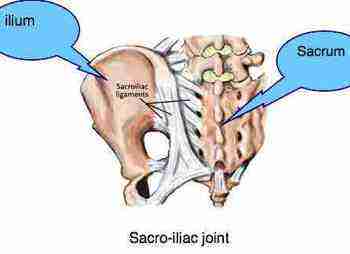
Sacroiliac joint treatment was redefined by Dr Clay Thompson. A violinist at school, he worked in a machine shop to earn a few dollars, gaining valuable mechanical experience. Unable to make a living from his music during the American Depression, he started working in an experimental agricultural equipment company while taking engineering courses.
After a serious injury he was greatly helped by a chiropractor, and entered Palmer College. Starting in practice with an old bench with a worn screw mechanism, he was surprised when relative affluence enabled him to buy a new solid table, but his patients scorned the new machine.
They preferred Mark I that conked as he adjusted them, leading him eventually to design a state of the art sacroiliac joint treatment protocol.
An inventor at heart, this konking by the table started Thompson thinking. In 1954 he finalized production of the first drop headpiece and ultimately collaborated with the Williams Healthcare company to build an adjusting table specialised in sacroiliac joint treatment; it used a pneumatically driven, segmented system, which quickly lowers the section of the patient’s body corresponding with the spinal region being adjusted.
The doctor thrusts at high speed, using minimal force because, while the thrust initiates the movement, the sudden drop helps to effect the adjustment of the fixated sacroiliac joint.
Leg length checks, palpation, Xrays and other appropriate orthopaedic tests are used by the Thompson practitioner in determining what to adjust.
This page was last updated by Dr Barrie Lewis on 1 January, 2019
Chiropractic help
Chiropractic help is the choice sacroiliac joint treatment.
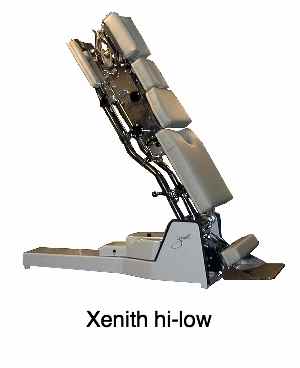
Sacroiliac Joint Treatment
Chiropractic sacroiliac joint treatment enthusiasts often acclaim the Thompson adjusting table as the finest adjusting table in the world.
Then, there's the activator treament for the sacroiliac joint.
Sacroiliac joint treatment was further refined by Arlan Fuhr and W.C. Lee who developed the Activator technique. Initially, the doctors used thumb thrusts, delivered at rapid rates of speed generated by elbow movement.
They developed the Activator instrument to reduce the injuries to doctors’ hands, and to ensure consistency of the adjustment. The instrument was patented in 1984 for use in the chiropractic help treatment to give consistent low force, high speed treatment to the sacroiliac and other joints.
Sacroiliac joint adjusting using the spring loaded instrument gives a specific line of drive and can be set to deliver force ranging from 9 to 33 pounds per square inch. Before an adjustment is administered, leg length checks and specific tests of joint motion are performed to identify the joints that require an adjustment.
Over 35,000 chiropractors have been trained in activator
technique making it the most widely used sacroiliac technique worldwide.
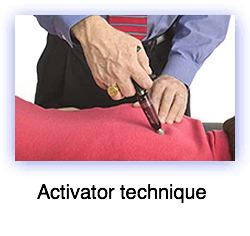
You surgeons of London, who puzzle your pates,
to ride in your coaches and purchase estates,
give over, for shame, for your pride has a fall,
and the doctress* of Epsom has outdone you all.
* A female bonesetter.
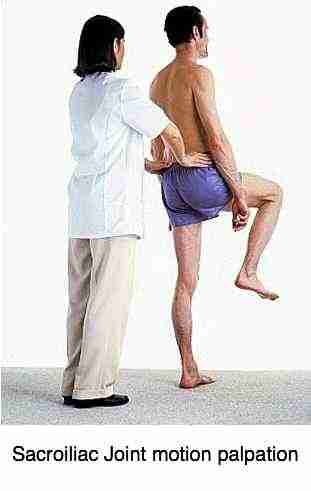
Self-confessed batty chiropractor Bernard Preston writes delightful stories described as "Gems, both funny and healthful, from the life and work of a Chiropractor." You will find several stories about the sacro-iliac patient. For more information about Bats in my Belfry ...
Available in the Americas and South Africa as a paperback, and worldwide for a fraction of the price ($2.99) instantly from Amazon as an ebook.

"Keep only those special gems that you know you will return to for wisdom and fun. For the rest, gladly pass your books on for others to enjoy ..."
- Bernard Preston
"Never lend books, for no one ever returns them; the only books I have in my library are books that other folks have lent me."
- Anatole Francois Thibault (Anatole France)
DIVERSIFIED TECHNIQUE
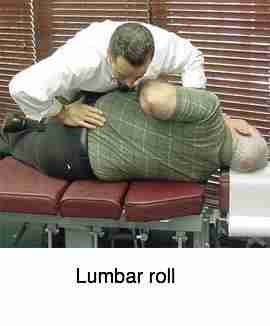
This is the classic chiropractic technique, initially developed by D.D. Palmer, the founder of Chiropractic. The focus is on restoration of normal biomechanical function, and the correction of subluxated or fixated joints. Diversified adjusting of the spine uses specific lines of drives for all manual thrusts, allowing for specificity in correcting mechanical distortions of the spine and sacroiliac joint treatment.
GONSTEAD TECHNIQUE
Sacroiliac joint treatment and the name Clarence Gonstead go hand in hand. He is the chiropractor often accredited with taking adjusting from crude and rudimentary bone setting to an understandable and logical biomechanical science.
Growing up on a rural farm provided young Gonstead with plenty of opportunities to explore the mechanical world, as Thompson had done before before him, developing an enthusiasm for repairing tractors and early automobiles.
As a young adult he developed acute rheumatoid arthritis. Finally, after about two weeks in bed, unable to stand or walk of even have the bedcovers touch his knee and foot whilst under the care of the University doctors, he was greatly helped by a chiropractor who came to the house to care for Gonstead. After a series of adjustments of his sacroiliac joints, and rest, he could finally walk again. It was a life changing event for Gonstead, and ultimately he became one of the icons of sacroiliac joint adjusting.
SIJ adjusting was neglected in the BJ Palmer era during which chiropractic drifted into an era of adjusting the upper neck only. Although perhaps not his intent, Gonstead redefined the very nature of chiropractic, in particular refining sacroiliac joint treatment.
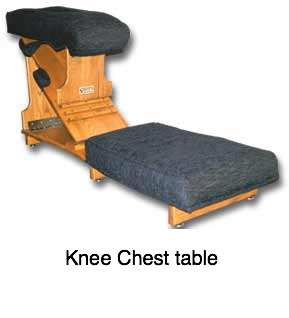
SIJ ADJUSTING SUMMARY
Sacroiliac joint conditions respond to all of these techniques. Each have their own particular merit for adjusting the pelvis and most chiropractors will choose one or other sacro-iliac joint treatment that best suits the patient's condition.
Aside: Trolling the net you will find various people promising to train you in how to adjust the spine in a week, or a few weekend courses. I have spent nearly 30 years practising the art of manipulation, and I still find every back unique, and most backs a challenge. The thought of some quack teaching lay-people to do what is extremely complex, one of the real art forms, makes me feel not a little sick. After all, can you learn to bake a decent loaf of bread at a weekend course?
Exercises for sacroiliac joint pain
A simple set of back exercises are vital if you have suffered from chronic lower back pain. Done EVERY morning (they take only 40 seconds) before you get out of bed will make a world of difference. I NEVER miss them... EXERCISES FOR SACROILIAC JOINT PAIN... and also for a weak bladder.
The sacroiliac joint's greatest enemy is the chair. Well, back pocket wallet would perhaps like to dispute that, and leg length inequality and low back pain is certainly in the running too for the top spot.
And the lower back's best friend? More exercise. These hula hoop exercises are obviously not for the acutely painful back, but the trick with the lower back is to exercise when it's not sore. Like brushing your teeth.
IMPORTANT CONSIDERATIONS
- Leg Length Inequality research (short leg)
Chiropractors widely use a variety of orthotics to compensate for a
short leg. This is based on research repeatedly done, concluding that
low back pain is commonly caused by a difference in leg length.
- Foot dysfunction or pain?
Commonly we find a patient's sacro-iliac joint condition is related to the foot. It could be pain which makes them limp, or simply dysfunction.
If your SI-joint is not getting better, think FOOT. Read more about Chiropractic treatment of foot pain.
USEFUL LINKS
- SACROILIAC JOINT HOME page
- Ankle joint pain casefile
- Still constipated despite a SI adjustment? Think Apple Salad Recipe ...
Did you find this page useful? Then perhaps forward it to a suffering friend. Better still, Tweet or Face Book it.
